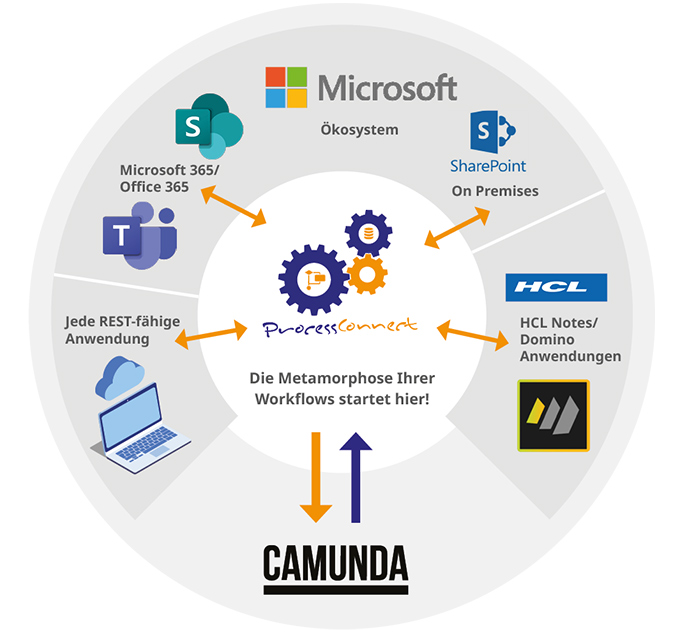Die Teilnehmer in Frankfurt mussten sich daran gewöhnen, laut zu sprechen, damit die Online-Teilnehmer auch was mitbekommen. Anfangs mussten wir in Frankfurt noch ab und zu ans lauter sprechen erinnert werden aber nach kurzer Zeit lief das dann von selbst. Erster Punkt war ein Rückblick auf das vergangene Jahr. Was war gut, was nicht so gut. Sehr gut gefallen haben unsere monatlichen Online-Events und als Krönung die #dachnug48. Als gut und richtig wurden auch der Kontakt in die Schweiz und die ersten gemeinsamen Schritte mit Österreich gewertet. Mit Helmut Sproll hatten wir sogar einen Schweizer Anwärter für den Vorstand gewonnen.
Insbesondere die Zusammenarbeit mit der Schweiz bringt allerdings auch neue Herausforderungen. Ein Beispiel dafür ist die Mehrwertsteuer, denn wenn Schweizer an kostenpflichtigen Events der DNUG teilnehmen, müssen sie keine Mehrwertsteuer bezahlen. Wir organisieren alle unsere Events mit Eventbrite und zumindest im Moment kann diese „Sonderbehandlung“ der Schweiz in Eventbrite nicht abgebildet werden. Das ist jetzt sicherlich kein Showstopper, muss aber zwingend gelöst werden. Mehr als Schade ist, dass sich Verena und Jürgen nicht mehr zur Wahl stellen und somit aus dem Vorstand ausscheiden werden. Angesichts der individuellen Situation der beiden absolut verständlich, verliert der Vorstand dennoch zwei Mitstreiter, die immer mit viel Herzblut dabei waren.
Überschaubaren Beifall gab es für den „Non-Collaboration“-Tag der #dachnug48. Ziel war gewesen, HCL über die uns allen wohlbekannten Collaborations-Themen hinaus sicht- und greifbar zu machen. Auch wenn nicht jede Lösung „usergroup-tauglich“ ist, so gibt es im stetig wachsenden Portfolio von HCL Software doch Angebote, die aus Sicht des Vorstands und auch aus Sicht von HCL ganz gut zur DNUG passen. So hat zum Beispiel „BigFix“ mit Aspekten wie Mobile Device Management und Softwareverteilung eine offensichtliche Nähe zu den Apps für E-Mail (Verse) und Connections. Aber gut, es wurde klar, dass man hier zum einen eine gewisse Ausdauer benötigen wird, zum anderen aber vielleicht auch neue Wege gehen muss. Dann haben wir nach der Terminplanung die Themen für 2022 aufgestellt. Hierbei hat uns das bewährte Huddo-Board wieder gute Dienste geleistet. Zur Vertiefung der Themen haben wir für jede Fachgruppe einen Breakout-Room und für einen Teil der Anwesenden den Raum nebenan genutzt. Hier zeigten sich denn mitunter auch ein wenig die Tücken einer hybriden Veranstaltung (das zurückholen der Teilnehmer aus den Breakouträumen ist bei einem hybriden Event zumindest teilweise durchaus wörtlich zu nehmen), aber Daniel hat das in gewohnt souveräner Manier gemeistert.
Der Nachmittag drehte sich thematisch ausschließlich um die #dachnug49 in Konstanz. Wir haben den Konferenzort gesehen und Helmut hat den aktuellen Stand des Konzepts für die Aussteller vorgestellt. Wir wollen wieder eine Onsite-Konferenz veranstalten und haben die nicht unbegründete Hoffnung, dass nach der langen, Corona-bedingten Durststrecke viele unserem Aufruf folgen werden. Oberstes Ziel ist es möglichst viele Teilnehmer nach Konstanz zu bringen; Konstanz soll im Umfeld von HCL Software DAS Premium-Event im deutschsprachigen Raum werden. Um dies zu erreichen, sind wir als Usergroup insgesamt gefordert. Jede Idee, jeder Beitrag, der uns hilft, die Teilnehmerzahl zu maximieren, ist herzlich willkommen. Eine der bereits angedachten Maßnahme ist es, dass Aussteller keine Standmiete mehr bezahlen, sondern eine bestimmte Menge Tickets kaufen, die dann an Kunden oder Partner weitergegeben werden müssen.
Der Beitrag Nachbericht zur Jahresplanung 2021 erschien zuerst auf DNUG e.V..












